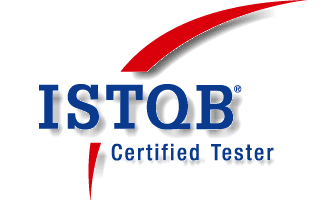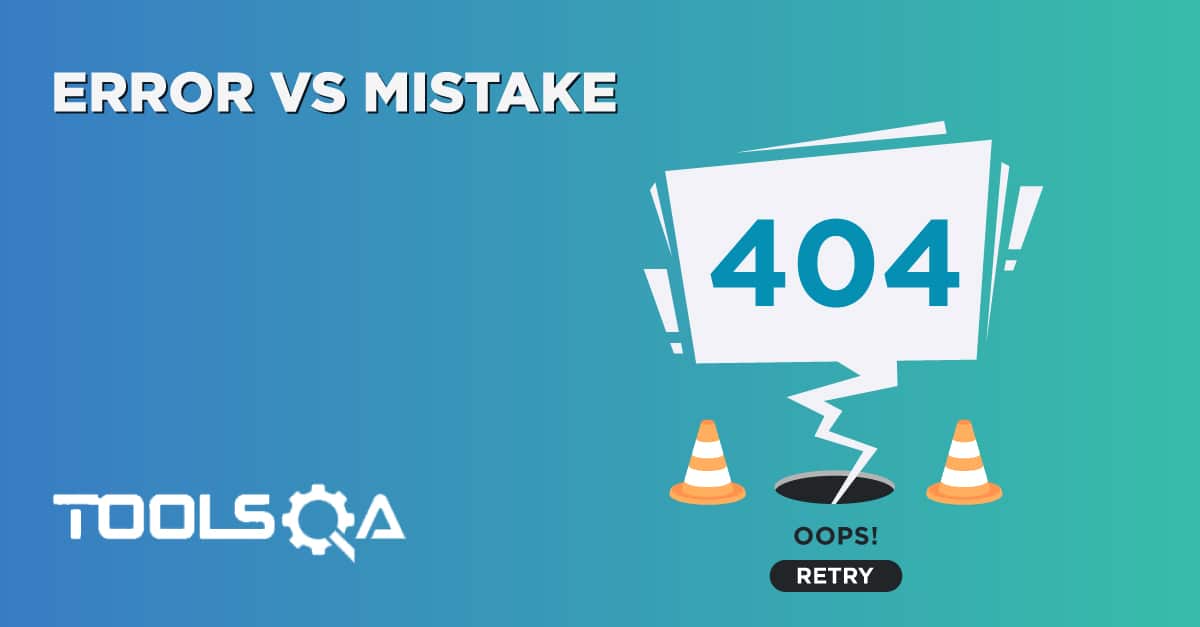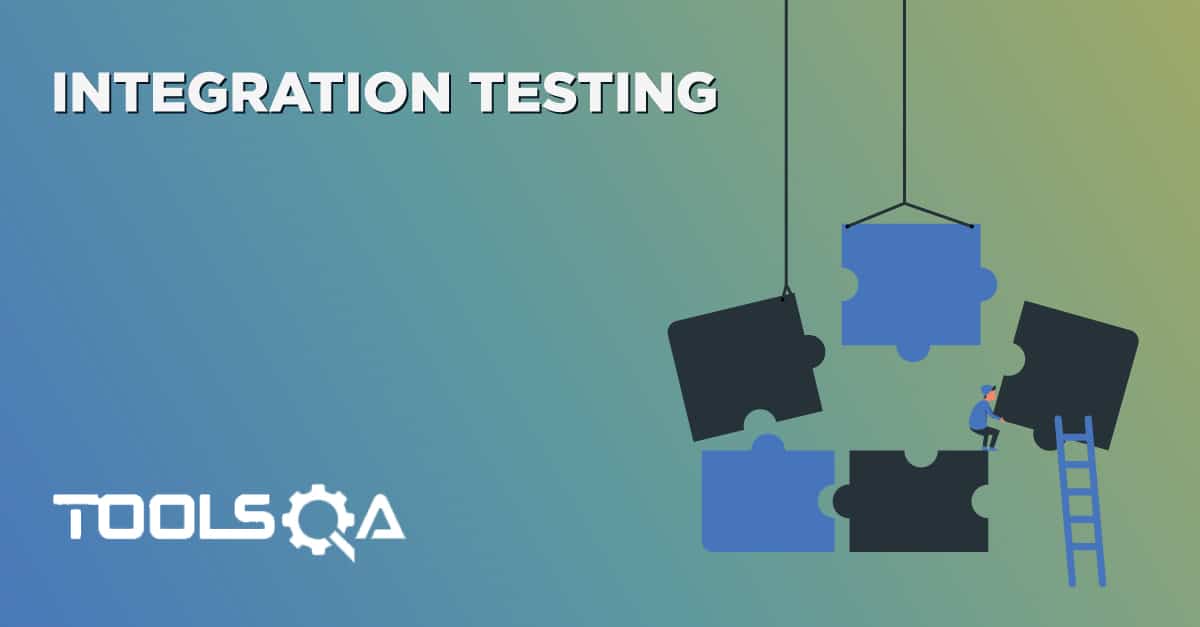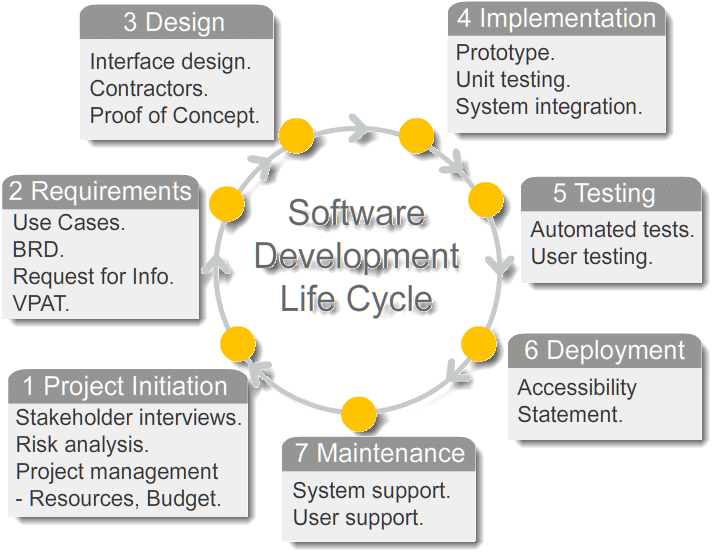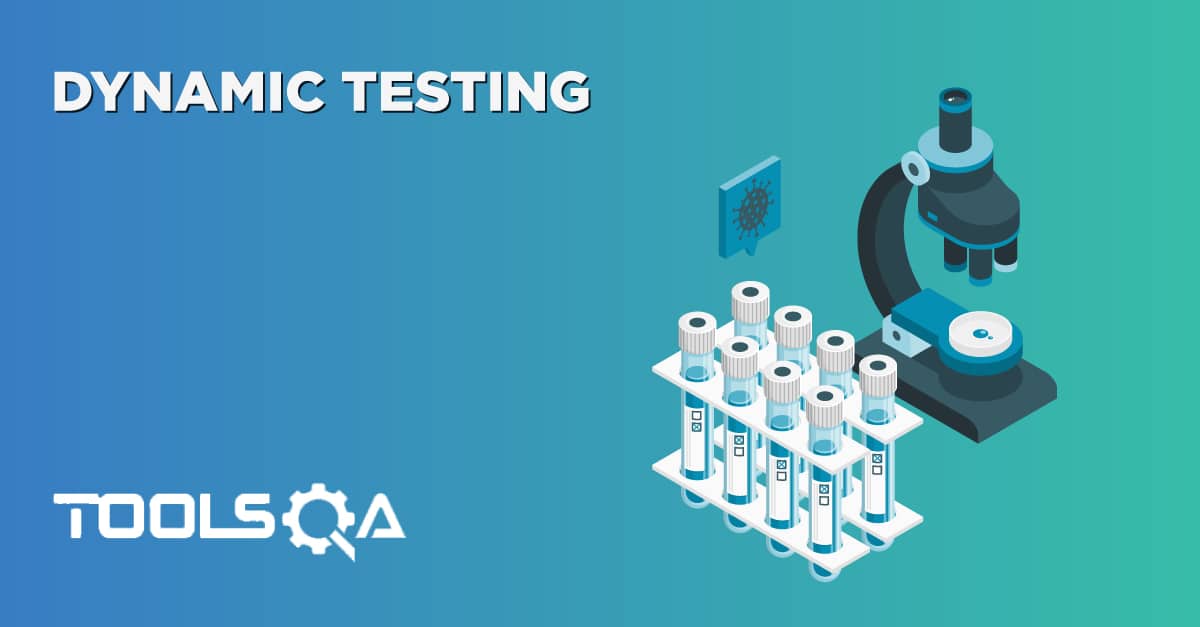Organizations often use the terms Quality Assurance and Quality Control interchangeably. However, both represent two very different aspects of quality management. So, let's understand how these two terms are related, and the critical differences between them.
In this article, we will focus on the following points.
- What is Quality Management?
- Quality Assurance - A Defect Prevention Activity
- What is Quality Control - A Defect Identification Activity
- Relationship between Quality Assurance (QA), Quality Control (QC) and Testing
- Difference between Quality Assurance and Quality Control?
What is Quality Management?
Quality management is the process that ensures that only the best products are developed and delivered to customers through a well-planned and structured process. It is a combination of two approaches - Quality Assurance and Quality Control.
Quality Assurance and Quality Control are both parts of Quality Management. Together they ensure that the deliverables are of high quality and meet the expectations of the customers. The below figure shows this relation.
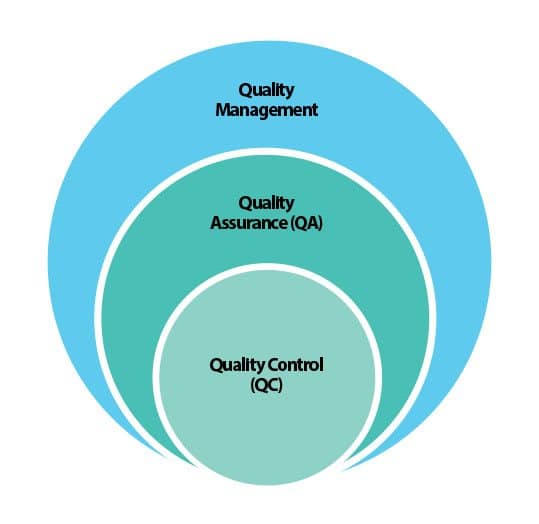
Some of the benefits of Quality Management are as follows:
- Firstly, it brings a higher level of customer satisfaction. Which, in turn, translates into a better brand reputation in the industry.
- Secondly, it produces a highly motivated & dedicated team that participates actively in the processes of quality assurance and quality control.
- Thirdly, it identifies defects across the software life-cycle. In addition to that, it ensures that the end product meets customer expectations.
- Moreover, it leads to appropriately planned methods and processes that save time, money, and efforts.
Quality Assurance - A Defect Prevention Activity
“The conformance to requirements is Quality". Quality assurance (QA) is the process of verifying whether a product meets the required specifications and the expectations of the client. This process ensures that you are doing the right thing in the right way, using the proper techniques. In addition to that, its primary focus is to prevent defects in the system.
Quality Assurance is static testing. In other words, it comes under "Verification" with the primary purpose of the prevention of defects. Quality Assurance is carried out across the entire product life cycle (SDLC), from the requirements phase to project closure.
The static testing types used in Quality Assurance are:
- Informal Reviews - The reviews which don't need documentation/ planning. Usually, the author will present the documents, and the audience will provide their viewpoints. These may or may not require documentation. Moreover, it's up-to-the author whether to accept or reject the feedback.
- Peer Review - This is, again, an informal method where colleagues can check each other's work product and provide feedback. It doesn't require formal documentation of feedback. Additionally, it's up to the author to accept or reject the feedback.
- Walk-through - This is a bit formal, where a lead or a manager would walk-through the document. It involves the official recording of the feedback, and the author incorporates the feedback. E.g., A QA Lead will do the walk-through of the automation scripts that a team member would have created.
- Inspection - This is the most formal review method. Where a higher authority like a client QA Manager or an Enterprise Architect will review the work product (e.g., Automation Framework), after that, formal documentation of these review comments happen. Finally, the author is supposed to formally share the status of the fixes and progress of these.
Quality Control - A Defect Identification Activity
Quality Control (QC) is a product-oriented activity that focuses on identifying the defect. QC involves checking the product against a predetermined set of requirements and validating that the product meets those requirements. Quality control is to inspect something (a product or a service) to make sure it works as per the defined requirements. If the product or service does not work well, then the problem must be solved or eliminated to meet the customer requirements. QC does not focus on the process. However, the main focus here is on the final product. In other words, it ensures that the final product is developed as per the quality process (Quality Assurance) and meets the client's requirements.
Quality Control is Dynamic testing - It comes under "Validation" with the primary purpose of finding defects. Dynamic testing takes place once the development of a component is complete.
The dynamic testing types used in Quality Control are:
- Component Testing - Testing individual components of a System
- Component Integration Testing - Testing two or more integrated components of a System
- System Testing - Testing a full system when it's fully integrated
- User Acceptance Testing - Tests carried out by customers to ascertain if the software is as per their requirements
Apart from that, several non-functional dynamic testing types are also a part of Quality Control. Some of these are:
- Performance Testing - First is Performance Testing, which tells whether the software performs well - E.g., the pages should start loading in less than 3 seconds.
- Load Testing - Second is Load Testing, which tells whether the software can take peak user load. E.g., during the Christmas season, the user load is at the peak. Hence, the software should be load tested to ensure it can sustain with this load.
- Security Testing - Next is Security testing, which ensures whether the software is secure enough. Moreover, security cannot be compromised.
- Recovery Testing - Finally, there is Recovery Testing. It tells whether the software can recover if something unexpected happens. For instance, if the server goes down and backs up, then the software should be able to recover.
Relationship between Quality Assurance (QA), Quality Control (QC) and Testing
The relationship between Quality Assurance (QA), Quality Control (QC) and Testing are hierarchical.
The main motto of Quality Assurance is the prevention of bugs in the software. It is more concerned with developing a quality process for software development. Which, in turn, will prevent the generation of bugs and results in the production of a quality product.
The primary goal of Quality Control is detecting errors by inspecting and testing the product. It involves comparing the product with a predetermined set of requirements and validating that the product meets those requirements.
Testing is a subset of Quality Control. It is the process of running a system to detect errors in the product to be corrected. Additionally, Testing is an integral part of quality control. Because it helps in demonstrating that the product works as expected and designed. In addition to the above, in Software Testing, we find out the problem and try to fix the problem. Which, in turn, is considered relatively easier than preventing the issue before it occurred.
The concept depicted in the figure given below :

Difference between Quality Assurance and Quality Control
QA & QC collaborate in all organizations. However, they are different from each other. The main difference is that the QA activities are proactive. In other words, they are designed to avoid the production of defective products. Whereas the QC activities are reactive because they are intended to detect and block defective products through inspection and testing mechanisms.
| Features | Quality Assurance | Quality Control |
|---|---|---|
| Purpose | It includes setting up of appropriate processes. Additionally, it introduces quality standards to avoid errors and failures in the product. | Ensure that the product meets the requirements and specifications before its launch. |
| Focus | The focus is on the product creation process. | The focus is on the actual final product. |
| Approach used | Quality assurance uses a proactive approach | Quality control uses a reactive approach |
| Objective | Aims to prevent errors from occurring through thorough planning of activities and adequate documentation. | It detects and discovers the prevalent errors. In other words, it ensures the correct following of the planned activities. |
| Testing Technique | Quality Assurance uses Static testing techniques. | Quality Control uses Dynamic Testing techniques. |
| Process | It uses the Verification Process. In other words, it means, "Are we building the product right". | It uses the Validation Process. Which, in turn, means "Are we building the right product". |
| Team | All the team members - Testing, BA, Developers can participate in Quality Assurance. | The testing team usually has the prime responsibility for Quality Control. |
| SDLC involvement | Quality Assurance begins right from the start of the requirement definition phase. | Quality control happens in the development phase when components start getting ready for testing. |
To conclude, both Quality Assurance and Quality Control is necessary to ensure a successful product. Additionally, they can help detect inefficient processes and identify errors in the product when used together. Therefore, QA and QC can help develop and deliver a high-quality product to their customers.




